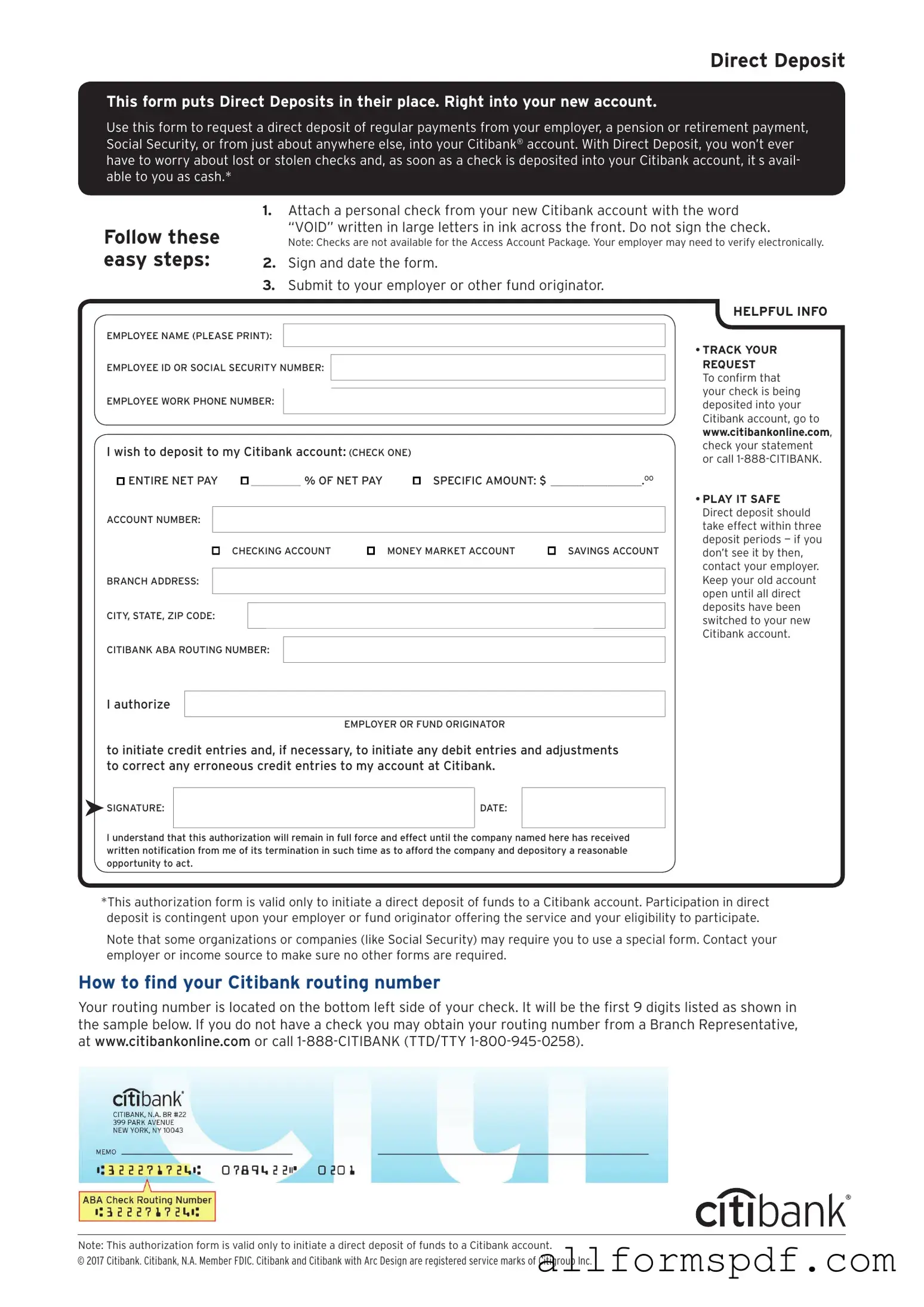Filling out the Citibank Direct Deposit form can seem straightforward, but many individuals encounter pitfalls that can lead to delays or complications. One common mistake is providing incorrect account numbers. Each account has a unique number, and a simple typo can result in funds being deposited into the wrong account. Double-checking this information is crucial.
Another frequent error is neglecting to include the correct routing number. The routing number is essential for directing funds to the correct financial institution. If this number is inaccurate, the deposit may not occur as intended, causing frustration and potential financial setbacks.
Some people fail to sign the form. A signature is often required to authorize the transaction. Without it, the bank may reject the request, leaving individuals without their expected funds. Ensuring that all required signatures are present can prevent unnecessary delays.
Additionally, individuals sometimes overlook the need to update their personal information. Life changes, such as moving or changing jobs, can affect banking details. It is important to keep the bank informed of any changes to ensure smooth processing of direct deposits.
Providing outdated or incorrect contact information is another mistake. If the bank needs to reach out for clarification or issues arise, having accurate contact details is vital. Failing to provide a reliable phone number or email can lead to missed communications.
Some individuals may also forget to specify the type of deposit. Whether it’s a paycheck, government benefits, or other income, indicating the type helps the bank process the request correctly. Omitting this information can result in confusion and delays.
Another common oversight is not reading the instructions carefully. The form may contain specific requirements or guidelines that are easy to miss. Taking the time to review the instructions can save individuals from making avoidable mistakes.
Moreover, individuals sometimes fail to keep a copy of the completed form for their records. Having a copy can be helpful if questions arise later or if there are discrepancies in the deposit. This simple step can provide peace of mind.
Finally, some people submit the form without confirming the processing time. Understanding how long it takes for direct deposits to begin can help individuals manage their finances better. Being aware of the timeline can prevent unnecessary anxiety about when funds will arrive.
